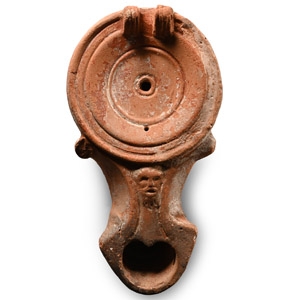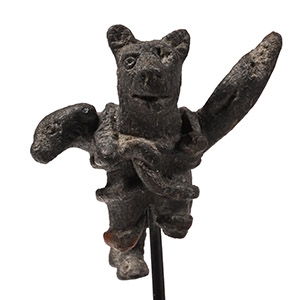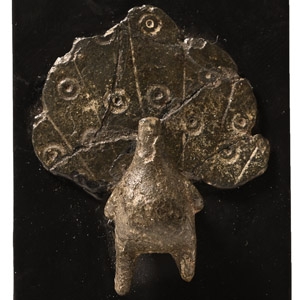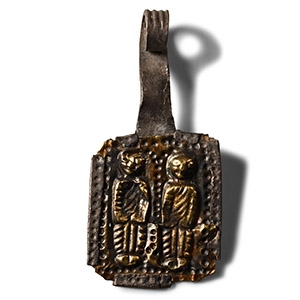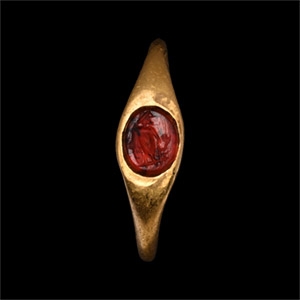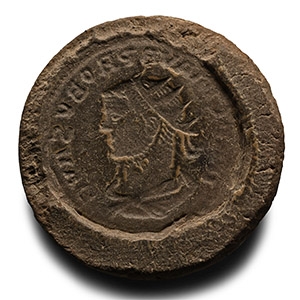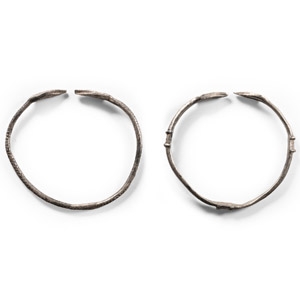Home > Auctions > 26 November - 1 December 2024
Ancient Art, Antiquities, Natural History & Coins
From a private German collection.
From a collection acquired on the UK art market from various auction houses and collections mostly before 2000.
From an important Cambridgeshire estate; thence by descent.
Cf. similar item in the British Museum under accession no.1919,0620.8.
In Greek mythology, Cerberus, often referred to as the hound of Hades, was a multi-headed dog that guarded the gates of the Underworld to prevent the dead from leaving. His figure is linked to the myth of Orpheus, the only one who managed to tame him with his songs, and to the myth of Hercules, the only one who managed to capture him.
From a collection acquired on the UK art market from various auction houses and collections mostly before 2000.
From an important Cambridgeshire estate; thence by descent.
Cf. Tilley E., Old collections, New questions: researching the Roman Collections of the Yorkshire Museum, York, 2018, for two peacock figurines (H2427; 2015.572) from York, one from the Railway Station cemetery. Another peacock from York (H2428) is thought to be a sceptre head.
The peacock had a dual symbolism in the Graeco-Roman world. In the pagan world it was the symbol of the goddess Hera (Roman Juno) and represented her beauty and immortality. In the Roman-Christian world it became a symbol of the resurrection of Christ, owing to its yearly moult and regrowth of its spectacular feathers.
From a collection acquired on the UK art market from various auction houses and collections mostly before 2000.
From an important Cambridgeshire estate; thence by descent.
Cf. Rolland, H., Bronzes Antiques de Haute Provence, Paris, 1965, item 215, for type.
Acquired on the UK art market before 2000.
Property of an Essex, UK, gentleman.
Cf. Hattatt, R., Brooches of Antiquity, Oxbow, 1987, fig.14f and no.765, for similar types.
From the collection of a London antiquarian, formed since the 1980s.
Ex German art market, 2000s.
Acquired from an EU collector living in London.
From the collection of Surrey, UK, gentleman.
Acquired in the mid 1980s-1990s.
Private collection, Switzerland, thence by descent.
Private collection, since the late 1990s.
From the collection of a gentleman, acquired on the London art market in the 1990s.
Private collection, Arundel, West Sussex, UK, 1980s.
Private collection, Arundel, West Sussex, UK, 1980s-1990s.
The armilla was a Roman military decoration in the form of an arm-ring or bracelet, often with snake-head terminals. They were made in gold, silver or bronze, the latter normally awarded to the lower ranks as a visible mark of distinguished service.
From a family collection mostly formed in the 1940s-1950s, thence by descent.
625 - 636 of 3419 LOTS

